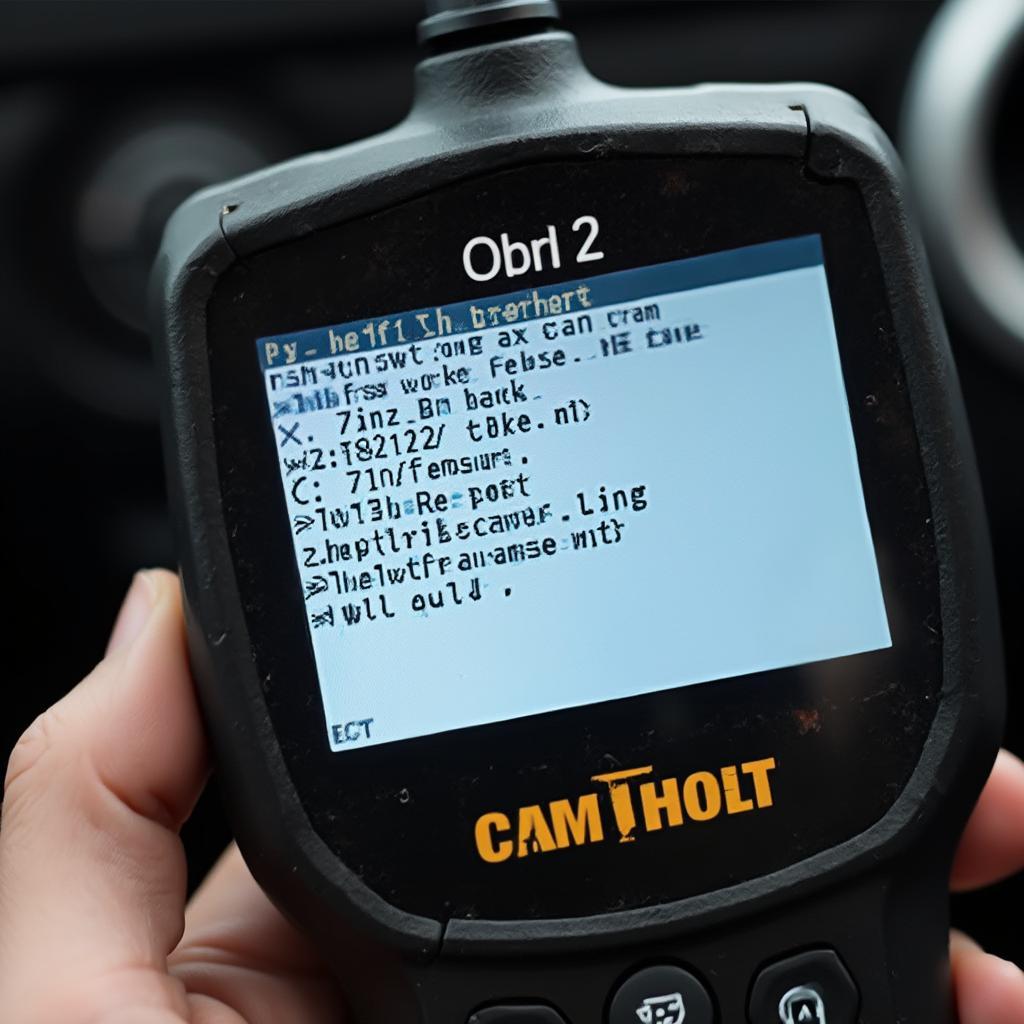The camshaft position sensor, often referred to as the CAM sensor, plays a vital role in your vehicle’s engine performance. Understanding what the cam sensor does is crucial for diagnosing and fixing potential issues related to OBD2 codes and drivability problems. This article will delve into the functionalities of the CAM sensor, its importance, common problems, and how it relates to your OBD2 scanner.
The CAM Sensor: A Crucial Component in Your Engine
The camshaft position sensor is a key part of your car’s engine management system. It monitors the rotation and position of the camshaft, sending this vital information to the Engine Control Unit (ECU). This data allows the ECU to accurately determine the timing of fuel injection and ignition, ensuring optimal engine performance and fuel efficiency. A malfunctioning CAM sensor can lead to a variety of issues, including poor fuel economy, rough idling, difficulty starting, and even a complete engine stall. Having a reliable OBD2 scanner, like those we review on OBDFree, can help pinpoint these issues quickly and accurately. You can find resources on our site, such as how to use an OBD2 Bluetooth device: cara pakai obd2 bluetooth.
How Does the CAM Sensor Work?
The camshaft position sensor typically uses either a Hall effect or a magnetic reluctance principle to detect the position of the camshaft. The sensor generates a signal that corresponds to the position of the camshaft, which is then sent to the ECU. The ECU uses this information to synchronize the fuel injection and ignition timing with the engine’s operating cycle. This precise synchronization is critical for smooth and efficient engine operation. Without accurate information from the CAM sensor, the engine’s performance will suffer significantly.
What Happens When the CAM Sensor Fails?
When the camshaft position sensor fails, it disrupts the engine’s ability to function properly. The ECU loses its ability to accurately time the fuel injection and ignition, leading to a range of problems, from rough idling and misfires to a complete inability to start the engine. In such cases, your OBD2 scanner will become an essential tool, displaying specific error codes that can help identify the faulty sensor. Check out our article on a specific OBD2 code example: land rover discovery d1 obd2 code p0340.
Diagnosing CAM Sensor Problems with an OBD2 Scanner
An OBD2 scanner is an invaluable tool for diagnosing problems with your car’s CAM sensor. When the CAM sensor malfunctions, it triggers a specific OBD2 code that is stored in the ECU’s memory. By connecting an OBD2 scanner to your vehicle’s diagnostic port, you can retrieve these codes and pinpoint the issue. This saves valuable time and money compared to traditional diagnostic methods. For specific OBD2 codes, refer to resources like our article on the P0300 code: obd2 code p0300 ford 2006 f250 5.4l.
Why is My Car’s CAM Sensor Important?
Simply put, the CAM sensor allows your car to run smoothly and efficiently. It’s the conductor of the engine’s orchestra, ensuring all the different parts work together in harmony. Without it, your engine’s performance would be severely compromised. Need help with your OBD2 port? We have information on various car models, like the 1987 Nissan 300ZX Turbo: 1987 nissan 300zx turbo obd2 port.
 OBD2 Scanner Reading Camshaft Code
OBD2 Scanner Reading Camshaft Code
Conclusion: Keeping Your CAM Sensor in Check
The camshaft position sensor, though small, plays a critical role in your vehicle’s engine performance. Understanding its function and how to diagnose related problems with an OBD2 scanner is crucial for any car owner. Regular maintenance and timely diagnosis with a good OBD2 scanner will help keep your engine running smoothly and prevent costly repairs down the road. Need help finding your OBD2 port? Check our guide for the 95 Passat: 95 passat obd2.
FAQ:
- What are the symptoms of a bad camshaft position sensor?
- How do I test a camshaft position sensor?
- Can I drive with a bad camshaft position sensor?
- How much does it cost to replace a camshaft position sensor?
- What OBD2 codes are associated with a bad camshaft position sensor?
- Where is the camshaft position sensor located?
- How does the camshaft position sensor work with the crankshaft position sensor?
For assistance, contact us via WhatsApp: +1(641)206-8880, Email: [email protected] or visit us at 789 Elm Street, San Francisco, CA 94102, USA. We have a 24/7 customer support team.
